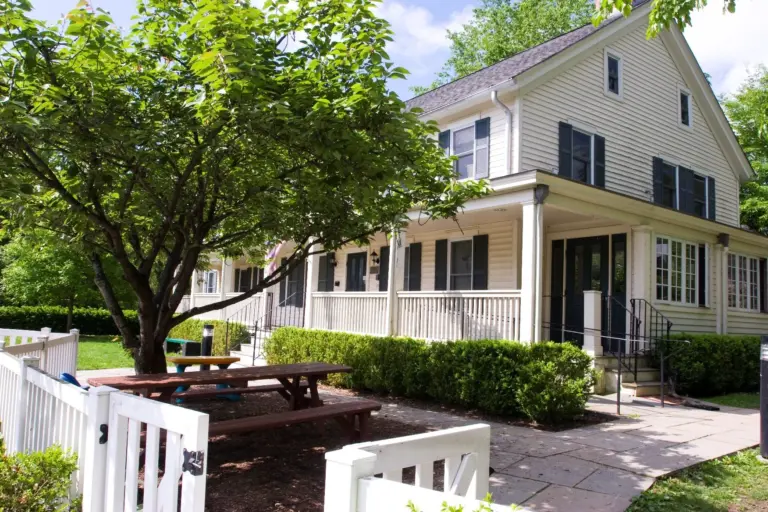By Anne W. Semmes
An extraordinary display of how gardeners of Greenwich are growing their gardens took place a week Thursday with the Greenwich Land Trust (GLT) kicking off its second annual Tour de Veggie with a growing number of 270 attendees visiting the eight gardens.
With each year, GLT executive director Will Kies reports, “We try to cover a geographic area with last year the Round Hill/Lake Avenue area, and this year the North Street/Stanwich Road area.” And next year, “We hope to focus on the Rivesville Road/King Street corridor.”
And what’s behind the idea of this tour? Kies notes that he and GLT board member Kim Gregory wished, “for our community to celebrate the beauty (and bounty) of local vegetable gardens. It’s a spin on the traditional garden tour. And gardens are chosen to represent a variety of civic organizations each year.” So, count these 2024 gardens as representing GLT, Greenwich Community Gardens, Greenwich Country Day School, Greenwich Riding Trails Association, Greenwich Garden Club, and Hortulus Garden Club – plus a last-minute step-in of Sleepy Cat Farm for Green Fingers Garden Club!
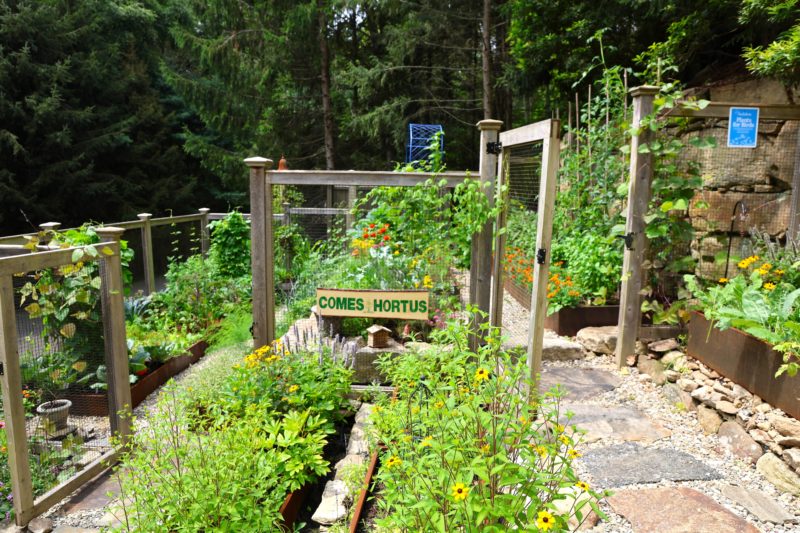
Eunice Burnett’s Comes Hortus companion planting!
Perhaps this now preferred planting approach is best illustrated by Eunice Burnett in her Hortulus Garden Club’s “Comes Hortus” for companion planting – “the practice of growing different plant species together in the same area or bed in order to benefit each other in various ways. Companion plants can help to improve soil quality, deter pests, attract beneficial insects, provide shade or support and even improve crop yields.”
Burnett’s companion vegetable garden has multiple beds filled with over two dozen vegetables including Red Cabbage, Vining rudbeckia, Vining pole beans, Baby bok choy, lettuce (All-star gourmet blend), Radishes (Crunchy King), Carrots, Kale, Swiss Chard.
She also lists choices in her “Companion Annual and Perennial Flowers for the Vegetable Garden” of Zinnias, Purple coneflower, Lavendar, Marigolds, Cosmos, Sunflowers, etc.
Add to that backcountry garden Arrow wood viburnum, “a food source for game birds, songbirds, and small mammals,” and American Holly and Asters. And alongside that singular feature, a “Jacobs Ladder” path of stones is Jack-in the-Pulpit and Virginia Bluebells.
So, Burnett finds her garden “a huge joy from start to finish” though “a ton of work but it was so joyful being out in the garden I didn’t find the work to be unpleasant at all.” Except for those “squash borers!!” She’s found her vegetables have “a superior flavor than grocery store options,” and “Cooking with the garden produce makes everything taste better.” She also found the feedback from Tour attendees “incredibly encouraging and satisfying. A lot of visitors thought that the garden was incredibly productive and beautiful.”
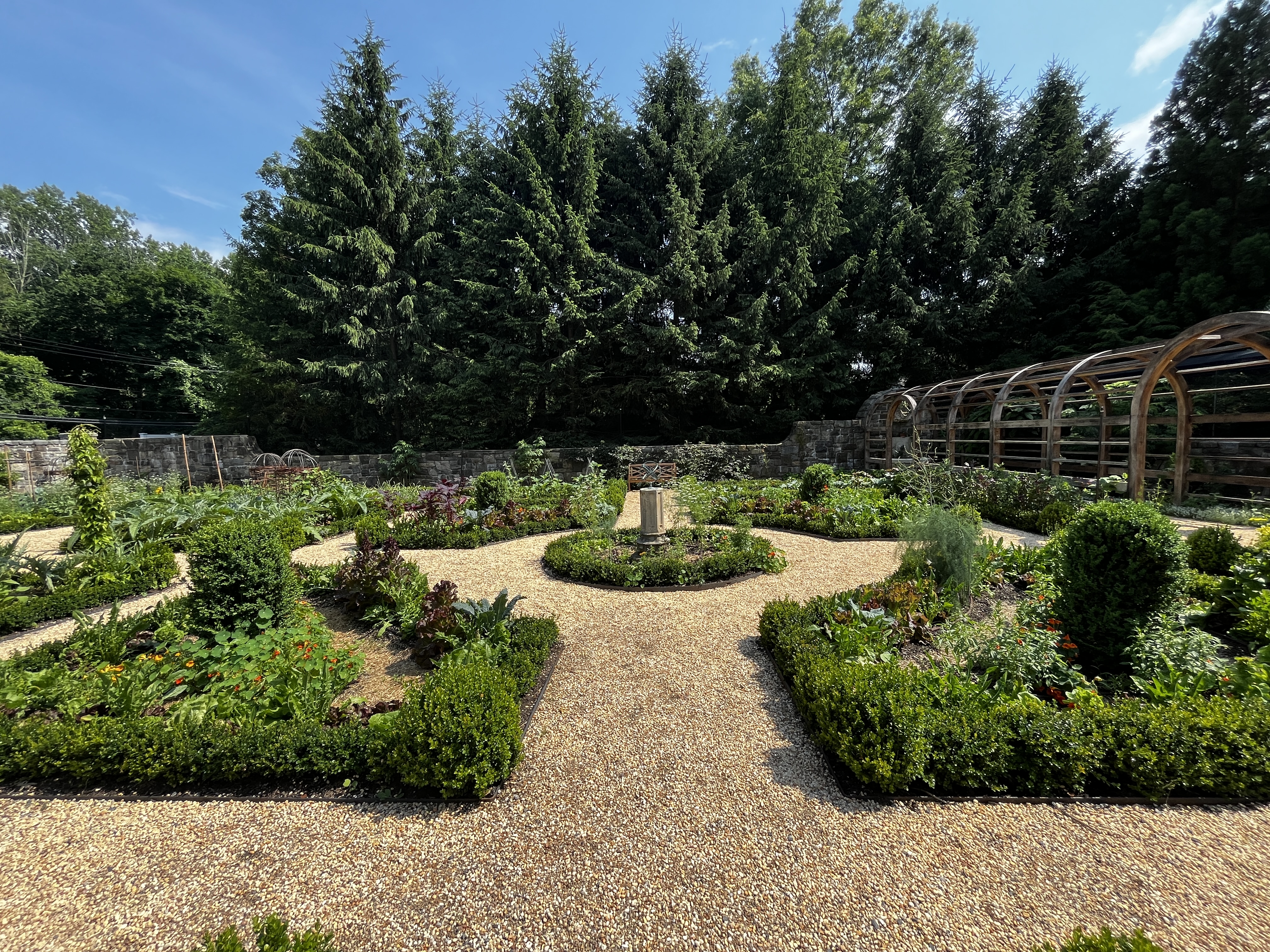
Sleepy Cat Farm vegetable garden
Sleepy Cat Farm is a true 13-acre backcountry gem of beautiful gardens readily seen in a book called “Sleepy Cat Farm” and on YouTube featuring Head Gardener and property manager Alan Gorkin who shared with this reporter that yes, those gardens feature a vegetable garden.
“The inspiration for the design and layout of the beds comes from various drawings of Marie Antoinette s farm in western Europe, and others like it. As far as plantings, I base the patterns on Rosalind Creasy and others who incorporate flowers into their vegetable gardens.”
Gorkin was delighted “to hear people enjoyed the use of flowers in the vegetable garden and surprised by how many had not seen them growing this way. I always try to grow tomatoes, lettuces, Basil, beets, onions, garlic, squash and cucumbers.” But “the biggest challenges are the critters, rabbits and groundhogs.”
His “favorite pleasure is when the food bank takes a large amount of fresh produce.” And his greatest pleasure is “to go out very early in the morning when the sun is barely up. Walking around, dew on leaves, and seeing the squash and gourd blossoms still fully open with bees inside. And picking mature lettuce with the excitement it brings in the chicken coop.”.

Greenwich Garden Club member Susan Fisher’s vegetable garden
Set behind Susan Fisher’s house is a vegetable garden screened-off-from-prevalent-deer with a history beginning in 1976, the year she and husband Ben moved there. [Fisher has written a history of her garden for GGC, so we are weaving bits of that history in with her comments.] There were traces of a previous garden when they arrived. “The antique water faucet, still functioning, is the remaining evidence.” Bed planting began “following methods of Adele Davis and Ruth Stout involving organic farming, companion planting, and lots of mulch.” Surely, forward thinking planting.
And stepping into Fisher’s life some 20 years ago was Catalina Wieser as gardening partner, friend and now GGC member. “She began as a hot house flower from Bogota, in brand new garden gloves who had never experienced getting her hands in the soil or the joys of growing beautiful, much less edible, plants.” Count in Catalina’s husband Rob, “doing some of the heavy lifting and carpentry, as well as their growing children,” and count in Fisher’s children as “wonderful weeders” from time to time.
And what are the primary vegetables they grow? “Lots of different kinds of lettuce, arugula, all kinds of things for salad, all the herbs, celery, things that would go into a salad. Cucumbers, tomatoes, squashes of all varieties. Peas in the early spring, carrots, beets. This year we have corn also.”
And what are some unexpected gardening pleasures? “The little bunnies’ nest that I came upon and the bunnies growing up. And the comradery of being out there with Catalina and other people, and the joy of the salads and eating the produce and giving it away. And I also grow a lot of flowers and that’s fun. I can pick them.” A larger value sees in her vegetable garden is, “It is making use of this beautiful place. It gets me into the cycle of nature. It’s meditative out there.” She’s impressed with those growing vegetables for Neighbor to Neighbor. “I don’t do that,” she tells, “but I give away a lot of stuff. And it’s exercise, it’s peace.”
Fisher was also “amazed” to learn from attendees, “Most everybody had a garden of their own – they grew something.” And surprised she was at how many came – an estimated 200. “This garden’s a long way backcountry. It’s amazing, really from 10 o’clock to 3!”
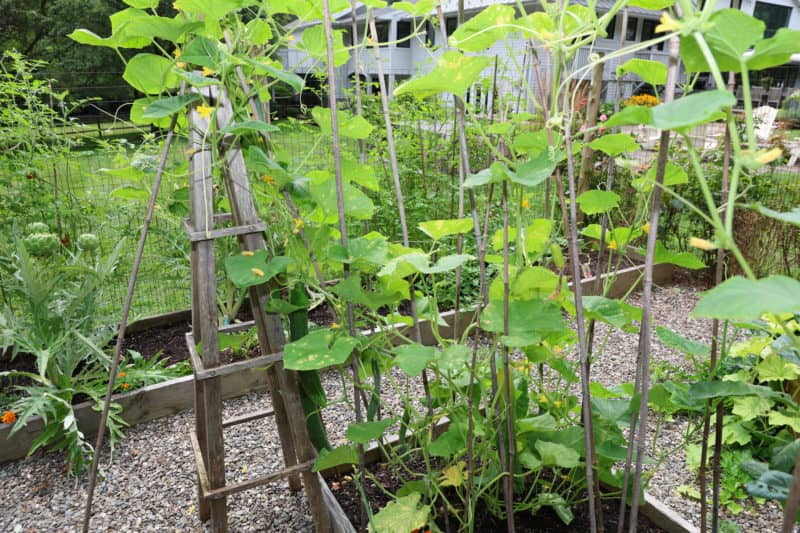
GRTA board member Susan Mufson’s vegetable garden
Susan Mufson serves on the board of the Greenwich Riding Trails & Barn, with two horses in her barn. So, what inspired her vegetable garden? She loves vegetables and always wanted her own organic vegetable garden. “So, when COVID hit and we were in lockdown mode in 2020,” she tells, “I had the time to focus on creating something. The desire for healthier, chemical-free food, an interest in sustainability and environmental stewardship, and a passion for growing and eating my own produce that has been challenging but rewarding.”
She grows red cabbage, lettuces, peppers, tomatoes, cucumbers, artichokes, and herbs. And she does it all herself, “from preparing the garden in April, planting all the vegetables, weeding daily and harvesting when vegetables are ready.” It’s those insects that lay eggs on the root of the vegetables early in the season, that are her biggest challenge. “It’s so important to find organic ways to prevent them from killing the crops.”
She spends a couple of hours each day in her garden and often loses track of time. She finds using her hands, “and stretching in every position to weed and harvest, and being surrounded by beautiful vegetation is calming to the mind and meditative.”
The larger value of her garden “is not having to go to the grocery store for food. I just go to my garden every day and eat whatever is available. That’s our dinner, and I am always amazed at how great everything tastes!” And she too was happy to learn from all those attendees of their personal gardens, and “what has worked for them to keep their garden healthy and free of insect damage.”
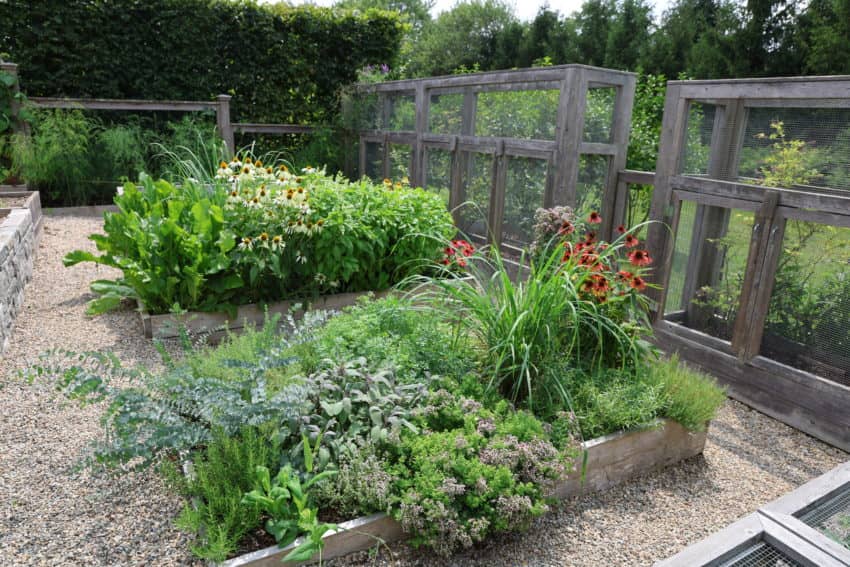
GLT Board member Sacha Janke’s garden
With space running out just this peak at GLT board member Sacha Janke’s garden she calls her family garden “serving generations,” with a “vibrant array of vegetables, fruits, and flowers. We’re dedicated to pollinators and a chemical-free landscape.”
And lastly, there’s Greenwich Country Day School’s (GCDS) Hydro Farm housed within or attached to a shipping container! Its freshly grown vegetables are used “largely as an educational tool and as a supplement to our fresh vegetables in our dining halls,” says GCDS Farmer Todd Portier. Surely worth a visit to see this climate-controlled, year-round facility!
But then there’s the ongoing 15-year Greenwich Community Gardens mission with visits anytime at their Armstrong Court Community Garden or their Bible Street Community Garden offering a total of over 200 raised beds offering affordable, healthy, and sustainable food!


